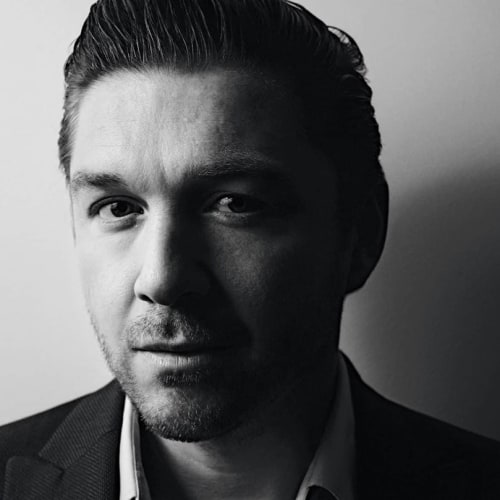
Were you always interested in art?
In my family, there was a big emphasis put on connecting with art and going to museums. Collecting was something I was always surrounded by, but I didn’t really know it was a career; much later, I connected to art in that way. In hindsight, it makes perfect sense. It led me to open my gallery. It’s been an adventure. Even though it’s a traditional industry, I believe there’s a lot of room to stand out, find an edge, represent really exciting artists, and do things differently.
You have an upcoming show with artist Louis Carreon. How did you two connect?
I first met Louis at an event we did at Art Basel Miami Beach in 2019. I was excited to meet him. He’s ambitious and loyal to his artistic craft. He’s developed so much over the years, so I found a true interest in his work. I’m especially excited about the main body of work he’s dedicating himself to, which is religious iconography. He approaches it with his own voice and a street-art flair. It was exciting to see how he translated these traditional images in his own style. We did a show together at the Madrid location of HG Contemporary last July, and then we collaborated on selecting pieces for the next show.
What challenges do art galleries face today?
Finding a healthy balance between what you want to express creatively as a gallery owner, and what the output of every show is. As a gallery owner, you feel a responsibility to support artists if you believe in them, and a lot of times, it’s a longer-term investment. It’s a beautiful challenge to keep your integrity and make sure the gallery platform stays strong.
How do you balance business and creative needs as a gallery owner?
It’s something you learn the hard way. Both are extremely important. It doesn’t help anyone if you’re just out there collecting artwork. What comes first is the future of the gallery, keeping it strong and flourishing.
How do you find new talent?
There’s no lack of artists in the world. We’re honored to be in a position of getting a lot of submissions by artists, and we go through every single one. It’s about finding the voice you want to express as a gallery owner. Competition has changed because of social media—there are various ways to get in touch with an artist now. But it’s also still about building relationships; it may be an old-school approach, but I really believe in that.
You collect art, too. What’s your strategy?
The work has to speak for itself. When you look at it, it needs to have an impact and move you in some way. You also have to consider the relationship with the artist. It’s especially emotional to purchase art, because you’re bringing it into your home.